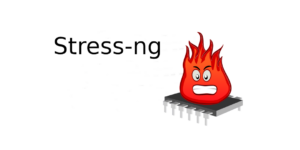Stress Testing is a software testing technique that evaluates the system or application under extreme workloads. This testing helps to identify the system’s breaking points where it fails to respond or crashes. It also helps to identify performance issues like slowdowns, memory leaks, and other unexpected behaviors.
Stress Testing can monitor the system’s response time when subjected to heavy loads. This testing is used for web applications, databases, network hardware, and other types of software systems to identify weaknesses that may not discover during regular operation.
Through stress testing, it is possible to predict how a system will respond when it is stressed beyond its design parameters, allowing for the early identification of any potential issues.
Definition of Stress Testing
Stress testing is a type of software testing that focuses on finding the breaking point of a system or application. It tests the system’s capability to handle extreme load conditions and validates its performance, reliability, and stability.
Stress testing identifies any potential problems in the system before they become actual issues. This type of test can perform multiple techniques that involve simulating heavy loads on the system or application to identify its ability to handle them and identify any bottlenecks that may exist in it.
Importance of Stress Testing
Stress Testing is an essential part of the software testing process. It evaluates how well a system can handle a high load and identify any issues that may arise under extreme conditions.
Stress tests are usually conducted on applications or systems to determine their performance levels under various loading scenarios. It helps to identify potential bottlenecks and areas of improvement before being released into production.
Understanding the need for stress testing is critical for maintaining high-quality software products, as it provides insight into the application’s performance in extreme environments.
Types of Stress Testing
Distributed Stress Testing
Distributed stress testing involves simulating heavy loads on a system by distributing the stress across multiple machines or nodes. It helps evaluate the system’s performance and scalability in a distributed environment, where resources are spread across multiple servers or devices.
Application Stress Testing
Application stress testing focuses on evaluating the performance and stability of a specific application or software component under stressful conditions. It aims to identify any bottlenecks, resource constraints, or performance issues within the application when subjected to heavy loads.
Transactional Stress Testing
Transactional stress testing simulates a high volume of transactions or requests on a system to assess its ability to handle the load effectively. It focuses on testing the system’s response time, concurrency, transaction processing capabilities, and data consistency during heavy transactional activities.
Systemic Stress Testing
Systemic stress testing involves subjecting the entire system, including hardware, software, and network components, to extreme stress conditions. It aims to identify any weaknesses or failures in the overall system architecture, infrastructure, or communication channels when under heavy loads or adverse conditions.
Exploratory Stress Testing
Exploratory stress testing is a more open-ended approach where testers explore and experiment with various stress scenarios that were not pre-determined. Testers apply different stress types, load levels, or environmental conditions to observe how the system responds and uncovers any unexpected issues or vulnerabilities.
Stress Testing Process

Identifying Test Scenarios
The first step in stress testing is to identify the test scenarios that subject the system to stressful conditions. These scenarios are based on expected usage patterns, peak loads, specific stress factors, or any other relevant factors that need to be tested.
Defining Test Goals
Clearly define the goals and objectives of the stress testing process. This involves deciding on performance metrics that will be measured throughout the tests, such as response time, throughput, resource utilization, or error rates. The goals should align with the project requirements and performance expectations.
Designing Test Cases
Based on the identified test scenarios and goals, design the test cases that will be executed during the stress testing. Test cases should be designed to simulate the anticipated stress conditions, including the volume of users, data, transactions, and any other relevant stress factors.
Preparing the Test Environment
Set up the test environment, which should closely resemble the production environment as much as possible. This includes configuring hardware, software, network settings, and any additional tools or monitoring systems needed for the stress tests. Ensure that the test environment can handle the expected load and stress factors.
Execution of Stress Tests
Execute the stress tests according to the defined test scenarios and test cases. Apply the stress factors and measure the system’s performance and behavior under the imposed stress conditions. Monitor key performance indicators and collect relevant data during the test execution.
Analyzing Test Results
Once the stress tests are completed, analyze the test results and compare them against the defined test goals and performance metrics. Identify any performance bottlenecks, failures, or abnormalities observed during the stress tests. Consider factors such as response times, error rates, resource utilization, and system stability.
Reporting and Action
Prepare a comprehensive report summarizing the stress testing process, including the test scenarios, executed test cases, observed results, and any recommendations for improvements or corrective actions. Share the report with the relevant stakeholders and collaborate to address any identified issues or performance gaps.
Remember that the stress testing process may vary depending on the specific project, system, or testing requirements. It is essential to adapt the process to fit the unique needs of the software tested and the goals of the stress testing effort.
Best Practices for Stress Testing
By following these best practices, you can conduct effective stress testing and ensure your systems are resilient and perform well under stressful conditions.

Plan and Define Test Scope
Start by clearly defining the scope and objectives of your stress testing efforts. Determine the critical functionalities and components that need to be stressed, and identify the stress factors and scenarios to be tested. A well-defined test scope helps focus the testing effort and ensures comprehensive coverage.
Set Realistic Scenarios
Create realistic stress scenarios that mimic expected real-world usage patterns and loads. Consider factors such as peak loads, concurrent users, data volume, and transaction rates. By setting realistic scenarios, uncover potential performance bottlenecks and identify how the system behaves under practical stress conditions.
Collaborate with Stakeholders
Involve stakeholders, including developers, architects, and system administrators, throughout the stress testing process. Collaborate to gather insights, clarify requirements, and understand system architecture. Their input can help identify critical stress points, refine test scenarios, and address performance concerns.
Automate Stress Tests
Automate the execution of stress tests to ensure repeatability and efficiency. Automation allows for easier generation of heavy loads, faster test execution, and consistent measurements. Utilize stress testing tools or develop custom scripts to automate the execution of stress scenarios, data generation, and result analysis.
Continuous Integration and Monitoring
Integrate stress testing into your continuous integration and delivery (CI/CD) pipeline. Incorporate stress tests into your build and deployment processes to ensure that performance issues are detected early in the development lifecycle. Monitor key performance metrics during stress tests and analyze system behavior in real-time to identify any degradation or anomalies.
Monitor System Resources
Keep a close eye on system resource utilization during stress testing. Monitor CPU, memory, disk I/O, network bandwidth, and other relevant metrics. It helps identify resource constraints, bottlenecks, or abnormalities that may impact system performance under stress.
Analyze and Act on Results
Analyze the results of stress tests thoroughly, comparing them against predefined goals and performance metrics. Identify performance bottlenecks, system failures, or potential scalability issues. Act upon the findings by collaborating with the relevant stakeholders to address identified issues, optimize system performance, and enhance scalability.
Stress Testing Tools and Techniques
The below-mentioned stress testing tools provide a range of functionalities and features to conduct stress tests effectively. However, it’s essential to select the tool that best aligns with your project requirements, technology stack, and testing objectives.
Additionally, manual stress testing techniques can also be employed, such as custom scripting, resource monitoring, and manual load generation, depending on the specific needs and constraints of the project.
LoadRunner

LoadRunner is a widely used stress testing tool from Micro Focus. It supports a range of protocols and technologies, allowing testers to simulate and measure system behavior under various loads and stress conditions. LoadRunner provides features for test script development, load generation, result analysis, and reporting.
JMeter

Apache JMeter is an open-source tool for load testing, including stress testing. It allows testers to create and execute test plans to simulate heavy loads on web applications, APIs, databases, and other services. JMeter supports distributed testing, performance monitoring, and result analysis.
Stress-NG

Stress-NG is a Linux-based tool for stressing system hardware components. It generates a wide range of CPU, memory, I/O, and other system stressors to evaluate the system’s stability, performance, and fault tolerance under heavy loads.
WebLOAD

WebLOAD, from RadView Software, is a stress-testing tool specifically designed for web applications. It enables testers to simulate heavy user loads and complex scenarios, measure response times, and monitor server performance. WebLOAD supports various protocols, browsers, and technologies for comprehensive stress testing.
NeoLoad

NeoLoad by Neotys is a stress testing tool that provides capabilities for load generation, test scripting, and result analysis. It supports a wide range of applications, including web, mobile, and IoT. NeoLoad offers features like distributed load generation, real-time monitoring, and integration with CI/CD tools.
Stress Testing Advantages
- Determines the system’s behavior: Stress testing identifies the system’s response in the event of a failure and ensures quick recovery.
- Make sure that failure does not compromise security: Stress testing makes sure that security problems won’t arise from system failure.
- Make the system work in every situation: Stress testing causes the system to function appropriately in normal and abnormal conditions.
Stress Test Example
Many apps use the internet to connect to servers, and they can only be used by users who are logged in. Such applications might function effectively with fewer recipients. However, if user activity significantly increases, the program notices odd behavior.
For example, suppose a clothing company decides to launch an online store application. The application performed well with consistent traffic. The company then made the decision to make a sale. The insane volume of traffic on the day of the sale led to overloading and a complete server shutdown. Customers were unable to connect to the server for several hours until the problem was resolved. Users were disappointed as a result and were unable to use the application.
Stress Testing in Software Development Life Cycle (SDLC)
Stress testing plays a crucial role in the software development life cycle (SDLC) by ensuring the robustness, performance, and reliability of the system. It is typically performed during the testing phase, after functional and integration testing.
By subjecting the system to high loads, stress testing helps identify performance bottlenecks, resource constraints, and architectural weaknesses that may impact the system’s stability and scalability. This early detection allows developers to address these issues before the system is deployed, reducing the risk of failures or crashes in the production environment.
Stress testing also helps validate the system’s ability to recover from failures and ensures it can handle extreme conditions without compromising security. By incorporating stress testing into the SDLC, organizations can deliver software solutions that perform optimally, provide a seamless user experience, and meet the demands of their users and stakeholders.









